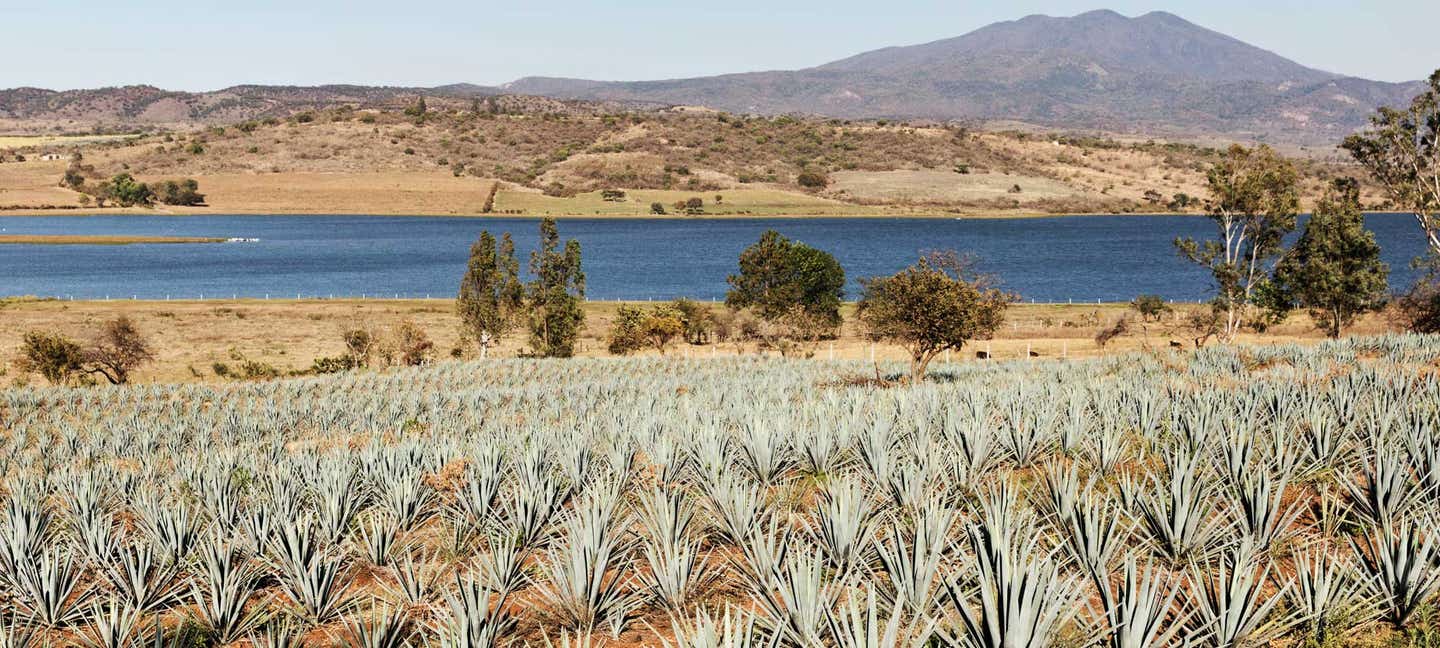
What Happens When You Treat Making Tequila Like Champagne
The answer is a surprising blend of technical innovation and centuries-old craft
Juan Gallardo Thurlow is a jolly figure in a coral-colored linen shirt. He lends heft to his statements with sustained eye contact and follows them with a wink, like your grandfather, like your uncle, like this stranger who I've just joined for dinner. To my left, his wife Gela tells me about the bougainvilleas in Jalisco, and how the orange ones are more difficult to grow—she doesn't know why, she just knows it's true. Conversation drifts, as it's wont to do here in Guadalajara, to tequila: "For years now, it's all I drink," Gela says. "Nothing else will do."
An industrious businessman from a prominent Mexican family, Gallardo has a diverse array of interests: He has served as both the CEO of a company that processes much of Mexico’s sugarcane and molasses, and as the director of a company that distributes all of the country’s Pepsi products; he has created a foundation to provide aspiring college graduates in Mexico City with financial scholarship; and, descending three stories into the hillside behind his Guadalajara home, he has devised an elaborate Japanese garden, a collaboration with a man he happened to meet one day at a local bank. “The garden represents a journey,” he says, gesturing toward a crashing waterfall that slowly meanders down a winding path before coming to rest in a tranquil pool.
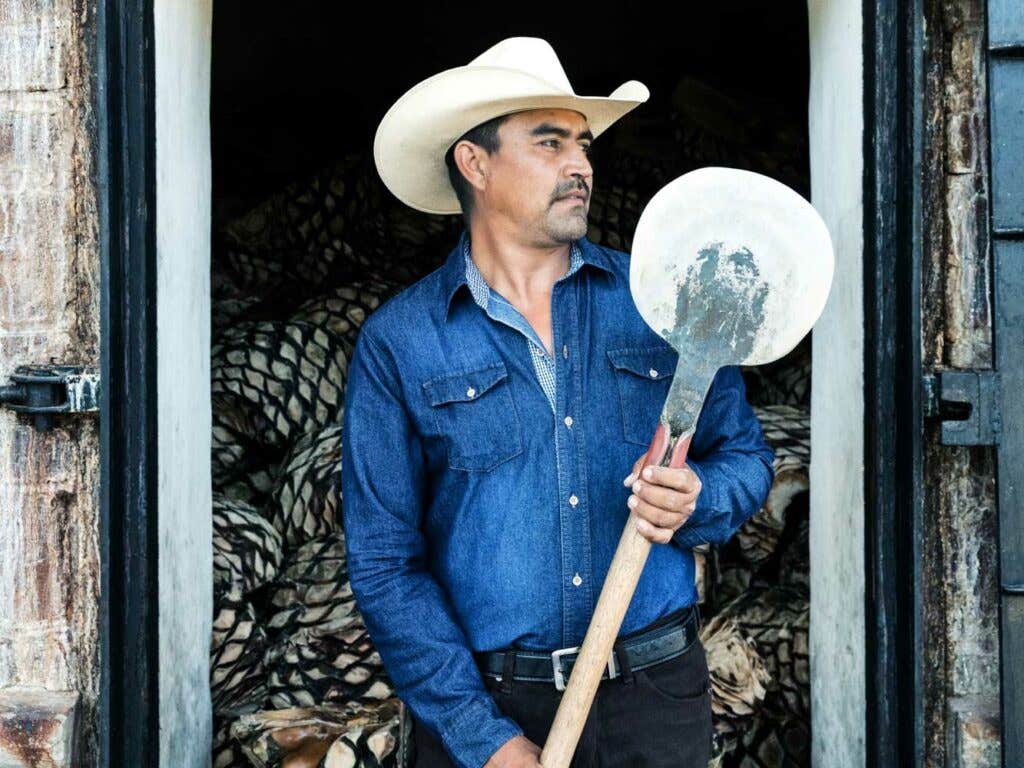
Another such serendipitous encounter led Gallardo to some influential folks at French spirits group Moët Hennessy—among them Trent Fraser, former Vice President of champagne label Dom Perignon. As the friendship blossomed, a collaboration seemed inevitable, and a discreet inquiry was made: How might Moët Hennessy, overseer of prestigious brands like Dom and Krug and Veuve Clicquot, break into the tequila industry? And would Gallardo help?
“Project Blue,” as it was known then, was a secretive venture. Gallardo was an enthusiastic partner, and had the resources, recognition, and local connections to pull it off, but Fraser had another case to make: He had to prove to the folks at Moët Hennessy that not only was tequila a spirit worthy of their their investment, but that he could make one that would fit into their world-class collection.
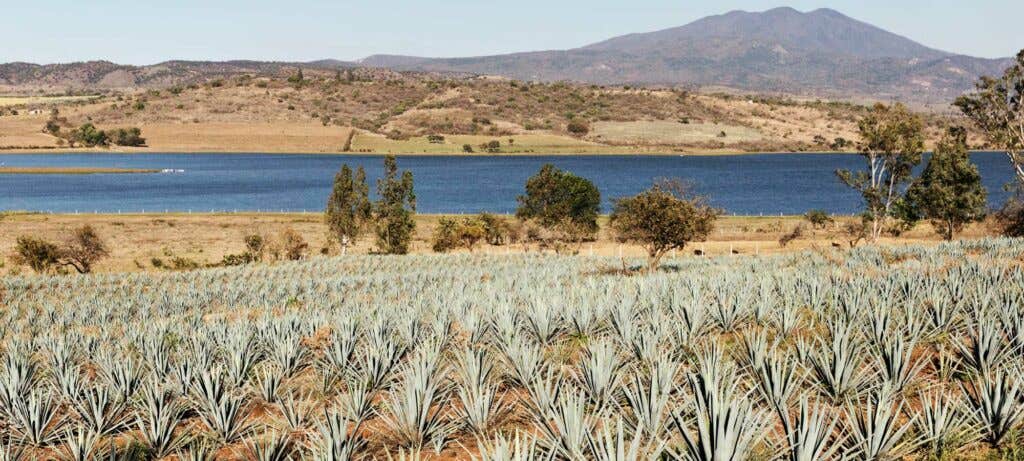
Fraser spent more than 20 months exploring the Jalisco region of Mexico, the state believed to be the birthplace of tequila, searching for a distillery that could become the future home of this new operation. He and Gallardo met with local distillers and recruited artisans with deep ties to Jalisco's tequila history, including Ana Maria Romero Mena, one of the industry's most widely respected tequila experts, who was hired to develop the two unique blends that would ultimately make up the brand's portfolio. Author of The Aromas of Tequila: The Art of Tasting and an influential maestra tequilera with some radical new ideas, there was no one better for the job.
Fraser ultimately found a small, run-down distillery that was barely producing anything, just outside the city of Tequila, from which the spirit took its name. The distillery was nestled in the shadow of the Volcán de Tequila, a volcano that erupted some 200,000 odd years ago, transforming the Mexican landscape and infusing the local soil with igneous rock and ash. After a complete overhaul of the distillery, they got it up and running and purchased some nearby land to plant agave of their own. It was given the name Volcán De Mi Tierra, an expression that (idiomatically) translates to "land of the volcano."
But all the while, there remained the question of the tequila itself. How could a French beverage group, one famous for its champagnes and cognacs, oversee the making of a spirit that both impressed its tastemakers and paid homage to its centuries-old Mexican heritage? With Romero Mena at the wheel, they were able to prove that making tequila and making champagne—both of which involve the meticulous cultivation of a single plant to create the perfect expression of a region’s terroir—were not as different as they seemed.
“We had all these amazing noses at the table,” says Gallardo, referring to the time the leaders of Moët Hennessy’s spirit brands visited Jalisco to sample the early expressions of Romero Mena’s tequila. “Glenmorangie, Hennessy, Dom [Perignon], all of them.” It was imperative that the company’s significant talent, known for identifying and cultivating sublime flavors in their respective products, understood the subtlety of flavor that could come from tequila, how dramatically the terroir, the roasting process, the ferment, and the distillation could affect the final product—and, how they could manipulate each of these factors to reach what they believed was the ultimate distillation of the Mexican landscape.
Romero Mena supervised 177 unique trials before finally settling on the one that would ultimately become Volcan’s “Blanco” tequila. But to understand what makes it so special, a quick lesson in tequila production is in order.
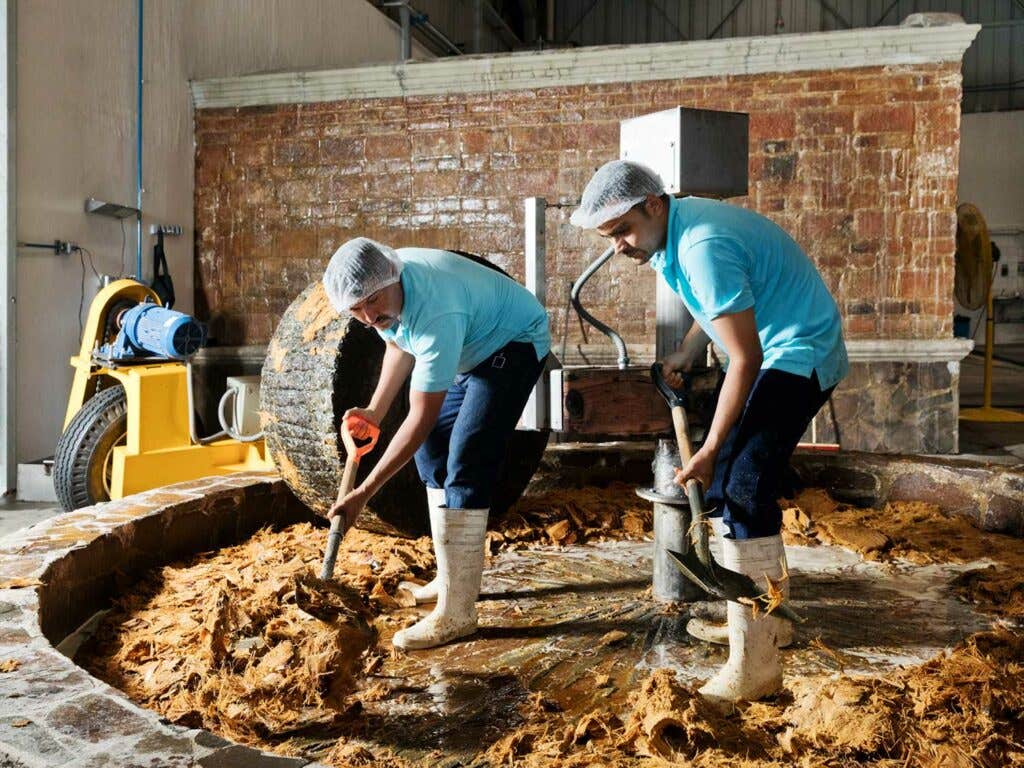
How Do You Make Tequila?
All tequila starts with blue agave, one of hundreds of species of the agave plant that flourishes across Mexico. Mezcal is the blanket term for any spirit distilled from agave plants, and has been made in Mexico for centuries, but tequila has become its own designation, ever since the Mexican government created a "Declaration for the Protection of the Appellation of Origin" for it in 1997, ensuring that any product sold as "tequila" must be made in the state of Jalisco (or a few restricted outlying counties), and be made primarily from blue agave. Even with the official name of "tequila," a good portion of a tequila's must, or mosto, (the liquid fermented before distilling) can be made of other ingredients; just 51% has to be blue agave. Further distinctions, like "100% pure agave" are used when the ferment can be confirmed by the authorities to be made entirely from blue agave. For some context, Jose Cuervo's ubiquitous line of "Especial" tequilas are mixtos, made from blue agave supplemented with sugarcane. Their "Tradicional" line is certified "100% de agave" and retails for about twice as much.
But while the official distinctions end there (aside from age designations like joven [young], reposado [rested], and anejo [old]), dramatic variability can exist even between 100% agave tequilas, and can be the result of dozens of factors including, just to name a few, the age of the agave plants, how they're roasted, and the soil in which their grown. Agave grown in the highlands, for example, in iron-rich red volcanic soil, tends to have a lower fiber density than other agave plants, which causes them to carry more moisture, providing more pronounced floral, fruity flavors. Lowlands agave (which still grow at a dizzying 3,800 feet above sea level) tends to carry more herbaceous, grassy flavors, largely a result of higher temperatures and more intense sunlight. This is where the French champagne sensibility comes in: Instead of sourcing one single variety of agave, Romero Mena made use of both highland and lowland varieties—roasting, juicing, fermenting, and distilling them entirely separately before blending the resulting spirits to perfection. To a sommelier, the idea might seem rather obvious, but Romero Mena's approach is a first in Mexico's tequila industry: No tequila on the mass market has ever used this model before.
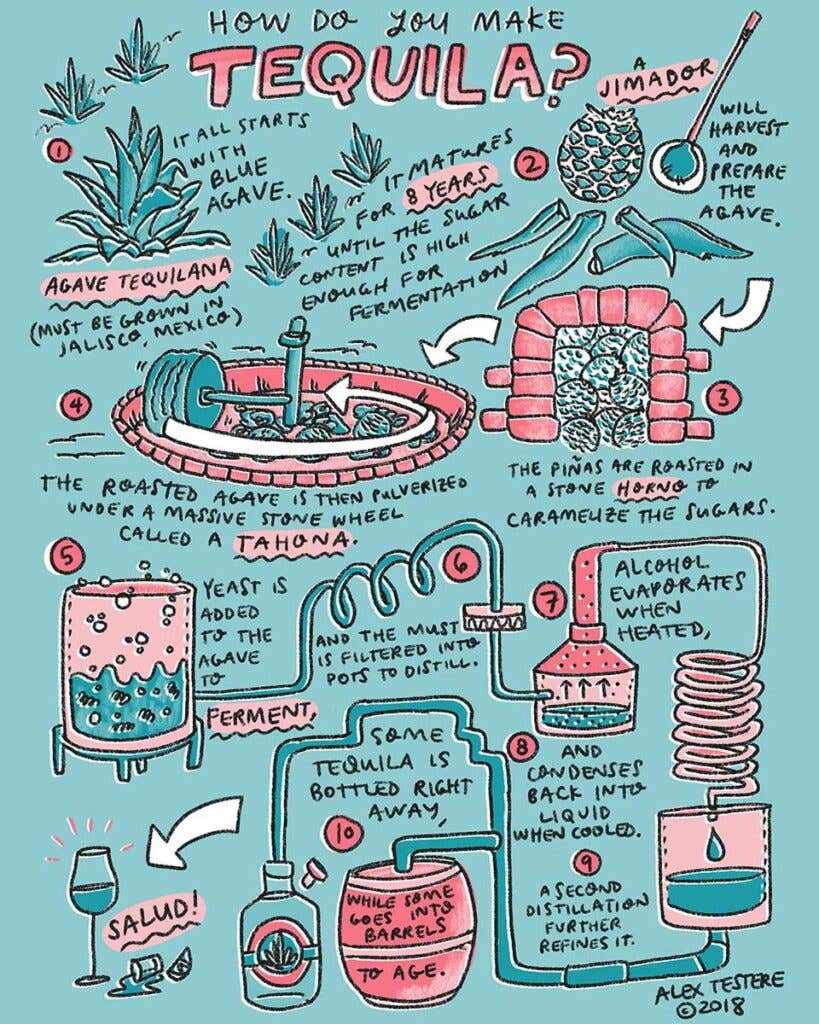
“We went through 177 unique trials,” says Fraser, now Volcan’s CEO. “The final version actually ended up using champagne yeast in the fermentation. Most people think that’s because we’re so known for champagne—Dom and Moët and so on—but it’s just because of those 177 attempts, it was the absolute best. And there was no way we were going to put a product out on the market until it was consistently the best.”
But Romero Mena's vision went even further: Not only would they pull plants from both of the two agave-growing regions, but each plant would have to be individually processed, a laborious and expensive effort that would ensure that only the most desirable components of each plant make it into the fermentation. The piña, the massive heart of a mature agave plant, develops unique flavor compounds as it roasts. Many makers use the whole plant, but Volcán's approach focuses entirely on the piña, which requires master jimadors, as the agave harvesters are known, to deftly strip each plant of its dozens of dense, swordlike leaves. The leaves, they found, produced too many "green" flavors when roasted, which they felt muddled the elegance of the expression of the piña itself. Outside the distillery, with the agave fields rolling away behind him, master jimador Joaquín Parra Ortega expertly eviscerates the leaves from a 175-pound agave plant, reducing the monstrous growth, which has spent nearly 8 years maturing, to an ovoid orb the size of a prize-winning pumpkin.
The trimmed piñas are then roasted: The lowlands piñas go into a traditional horno, a brick oven where they'll bake low and slow for 44 hours, concentrating the sugars and developing deep caramel flavors. Still warm from the oven, a shred of the roasted piña's fibrous flesh has the sticky sweetness of sugar cane and, after a taste, leaves a juicy trail dripping down my arm. The highlands piñas go into an autoclave, where they cook at a higher temperature for only 12 hours, which helps to emphasize its lofty floral aromas. The lowlands agave, which makes up 75% of Volcán's tequila ferment, is pressed on a tahona, a massive set of stone wheels dragged in a circle repeatedly, until the soft, fleshy piñas are reduced to a pulp. The liquid is siphoned off into tanks to ferment—with a proprietary champagne yeast for the highlands and a rum yeast for the lowlands—while the fibrous pulp is piled in heaps to dry, destined to return to the soil and provide nutrients for the next generation. The mosto is distilled just twice, lest it lose too much of its delicately crafted flavors, and blended, according to Romena Mena's precise recipe, before proceeding to a tiny machine where it is bottled just four bottles at a time.
Tequila has been made in much the same way for hundreds of years in Mexico, but while Volcán has managed to innovate on the genre, it’s still, at its heart, a pure expression of the art. Back at Gallardo's home, the jacaranda trees shaking in the breeze, a bottle appears on the table. “They say it's quite healthy for you too,” he intones playfully. Murmurs of assent ripple around the table; true or not, we’re glad for the excuse to enjoy another glass.
Keep Reading
Continue to Next Story










